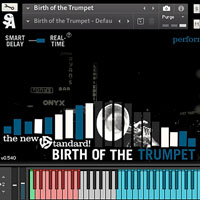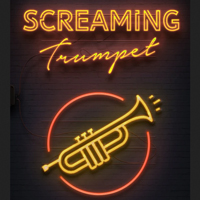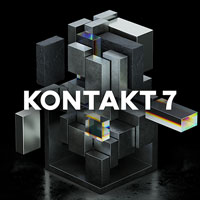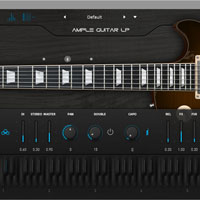Sample Modeling The Trumpet 3.0
|  |
The Trumpet 3
Created by Peter Siedlaczek & Giorgio Tommasini
We believe that The Trumpet, created by Giorgio Tommasini & Peter Siedlaczek, first released (v.1.01) in 2008 and subsequently updated to v. 2.52, is still unsurpassed in the field of virtual instruments. However, why not further raising the bar, for example by introducing the new outstanding features of the Trombone 3 as requested by many customers?
We were asked to maintain retro-compatibility with the original Trumpet. The task turned out to be quite difficult, and this major upgrade required quite a time.
But finally... The Trumpet 3 is here!
Instrument Technology
The Trumpet3 further expands Samplemodeling™ technologies. Multi-microphone anechoic recording allows to capture the original timbre of the instrument, along with its radiation pattern. Our proprietary "Harmonic Alignment" yields continuous transitions across virtually infinite dynamics. Specially devised "early reflections" impulse responses add a virtual space to the anechoic sound, greatly contributing to realism (see below). The programming moves further away from conventional libraries, by exploiting physically-oriented modulation of the recorded sound. The result is a playable, very expressive virtual instrument retaining the rich, full sound of a real trumpet.
The package includes three different B♭ Trumpets, a Cornet, a Flugelhorn, a German Trumpet, and a Piccolo Trumpet. The base material of the instruments consists of 278 MB of samples, chromatically performed by a professional trumpet player over a very wide dynamic range. All samples are unlooped, and have a minimum duration of about 10 sec. The Trumpet engine is structured according to an adaptive model, based on the performance "fingerprints" of the real instrument. The purpose of the model is to minimize the differences between the real phrases and those played by the virtual instrument.
Proprietary modal resonance IRs, innovative techniques for sample modulation, and advanced artificial intelligence MIDI processing are used for real time construction of all articulations and morphing across dynamics, vibrato, legato, portamento, trills, vibrato-like endings, shakes and so forth.
Pseudo-random detuning, based on real performance-derived pitch trends, is another outstanding new feature of The Trumpet 3, adding further realism.
Why anechoic?
The purpose of anechoic recording was threefold:
- avoid “contamination” of the pure trumpet sounds with the uncontrolled resonances of a particular ambience,
- allow artifact-free “harmonic alignment” processing
- provide clean articulations and phrases as a database to build the “adaptive model”.
What's new in The Trumpet 3?
The Trumpet 3 includes several exciting features:
- New Early Reflections algorithm. The early reflections (ER) are those components of the emitted sound reaching the listener shortly after being reflected from the closest rear and lateral walls, floor and ceiling. They convey information about the spatial localizaton of the instrument, and greatly contribute to realism. In the Trumpet 3, a sophisticated algorithm extracts the directional information of multi-microphone anechoic recordings to recover the overall timbre of the instrument along with its radiation pattern, assembling this information into a suitable ER impulse response, which adds a virtual space to the anechoic sound.
- Virtual Soundstage. This new feature allows precise positioning of the instruments in a virtual space located before the listener, using early reflections, pre-delay, convoluted panning and perceived distance algorithms. You can move your instrument back and forth, from side to side, or with a combination of the two, even in realtime, mimicking the natural movements of the player. You can modify the ratio direct/reflected sound, and even "displace" the back wall, for a variable depth effect.
- This virtual soundstage will set you free of adding a further suitable acoustic environment, without incurring multiple-ambience issues. This can be carried out within the same Kontakt Player, which provides a high quality convolution reverb.
- Real time Timbral Shaping. This revolutionary new feature adds a virtually infinite timbral variety to sample-based instruments, by acting on the amplitude of individual harmonics, or groups of harmonics, even in real time. This is not a graphic equalizer; the controlling bars are not assigned to fixed frequencies, but to the first 10 harmonics of the played note. As a consequence, the affected frequencies vary with the pitch of the note. So, rising, for example, bar #1 will boost the fundamental frequency (first harmonic) of each note played, yielding a rounder sound. Rising bars #3, #4, #5 will increase the intensity of the corresponding harmonics for a more "nasal" sound, etc.
- Microtuning. Another new feature is microtuning, applicable to individual keys even in real time, to better cope with non-tempered scales, so essential in, for example, Middle Eastern or Asian music.
- Expression Mapping. User-drawn rescaling of the expression CC may give better control of the dynamics, particularly when tailored to suit your own input devices like breath or wind controllers.
- Breathy Sound. Simply play at very low dynamics and lowest velocity, and you will get a very realistic breathy component accompanying the tone of the trumpet.
- "For Unison Ensemble" IR. A specially devised Impulse Response, markedly reducing the phasing which may occur when several instruments are driven from the same MIDI track (i.e. in unison).
- Unison Ensemble Multi. Special consideration has been given to creation of realistic ensembles from solo instruments, whether driven from separate MIDI tracks, or when playing unison. An advanced "Ensemble Maker" has been developed, affecting timing, static and dynamic pitch evolution, phase, response to dynamics, pitchbend, velocity, portamento time, in such a way that even if driven from a single MIDI source, each instrument will sound slightly different, as if played by a different musician.
- A ready-to-use Multi, including three specially devised trumpets, the Ensemble Maker, and an appropriate convolution reverb, suitable for unison playing straight out of the box, is included in the package.
You may buy Sample Modeling The Trumpet 3.0 or download it from our website.
This product was released on 09 Mar 2017. Please check compatibility with your hardware and O/S.
Reviews
Write a Review
From: Your Review: Rating: |







